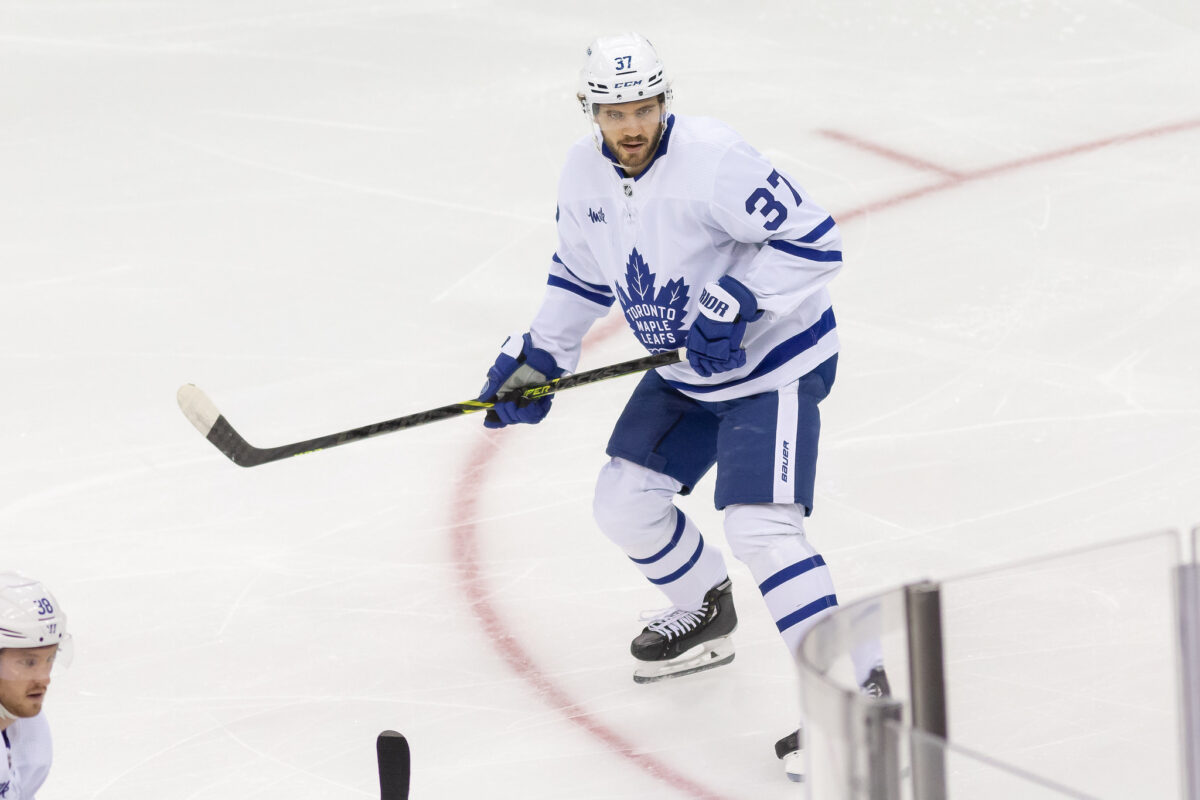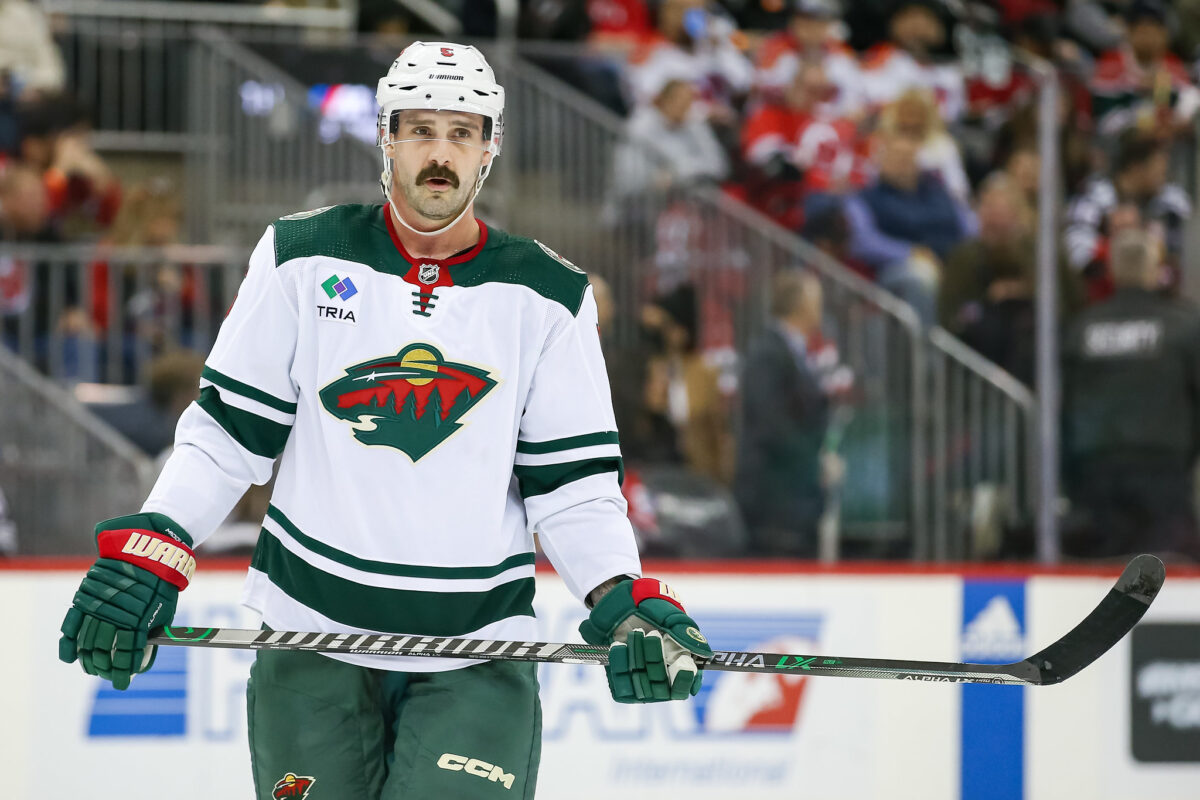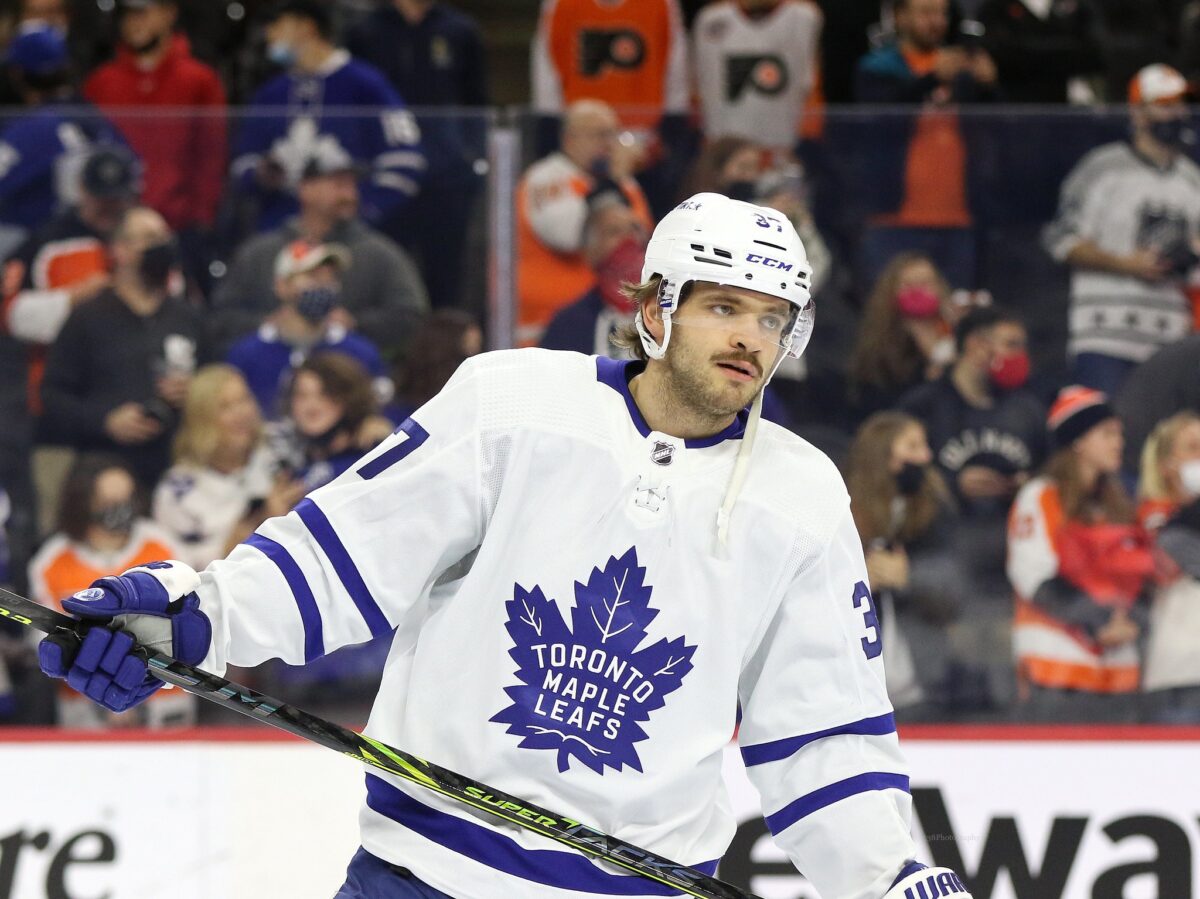It is officially trade season in the NHL, and with the trade deadline right around the corner on March 8, it means a ton of speculation. Well, for the Toronto Maple Leafs and general manager (GM) Brad Treliving, it means trying to find a way to improve the lineup. It could use some work; the defense core has struggled, and there has been next to no secondary scoring since the turn of the calendar. Unfortunately, to better his club, Treliving will need to part with a few pieces to be salary cap compliant. A few names come to mind to help move out money: Timothy Liljegren, Calle Jarnkrok, and David Kampf. All of them have fairly minimal cap hits, but for a team like the Maple Leafs, it is money in, money out, especially at the trade deadline.

For the Maple Leafs, it must be hard to have drafted both Liljegren and Rasmus Sandin and have neither of them work out as well as you would have hoped. Last season, former GM Kyle Dubas parted ways with Sandin in a trade that sent him to the Washington Capitals for Erik Gustafsson and a 2023 first-round pick. This season, Treliving may attempt a similar trade with Liljegren and try to bring in a draft pick as well as another serviceable defenceman to help the club.
Related: 2 Trade Destinations for Maple Leafs’ T.J. Brodie
It wouldn’t be shocking if Treliving also included him in a larger deal for a Chris Tanev package. This could make a lot of sense, especially with the club being in “win-now” mode. If the trade will help the organization, it would be wise to move on from him. So, here are three potential trade destinations for Liljegren if Treliving decides to move him.
Minnesota Wild
The Minnesota Wild are a team that could be interested in taking on Liljegren, as they are experiencing some cap troubles of their own. They have a relatively older team in the NHL and could use younger defencemen on their roster. Liljegren is 24 years old, which would make him the second-youngest blueliner that the Wild would have. He can play on their second power play unit when needed and would slot in nicely behind Brock Faber as their second-pair right-handed defenceman. He may be the type of player who can benefit from a quieter market, not to mention that he has had issues during his time in Toronto. However, he hasn’t exceeded expectations as well as he should have, which can make it all the more noisy. The change of scenery and less media attention may do him well, and he can find another level to his game with the Wild.

Liljegren could also benefit from a style change; when he came into the NHL, he was more of an offensive defenceman. However, that role was taken by Morgan Rielly and then given to Sandin, which meant he needed to adjust his style of play. When the Maple Leafs acquired Mark Giordano from the Seattle Kraken, that was when the change fully happened. The two were paired together on the bottom pairing, and it worked. They were a defensive-minded duo; they killed penalties and blocked shots, but since then, Liljegren hasn’t seemed overly comfortable. If he was traded to the Wild, he may find that his role there could change, and he may break out more as a player.
Calgary Flames
The Calgary Flames have been linked to the Maple Leafs for quite a while. It is largely due to Tanev’s fit, which is nearly perfect. He is the right-hand shot defenceman that the club needs, and while Liljegren is also a right-hand shot, he may be a target for the Flames in this trade. A trade involving just Tanev may not mean the end for Liljegren, but if Treliving can strike a bigger deal with his former team, which could include Noah Hanifin or Blake Coleman, then it would make sense to send him the other way. The Flames and Wild are in similar situations; they both have good teams that may require a bit of retooling to get them into the playoffs. That may mean selling some assets to clear some cap off of the books to go out and buy some players in free agency. Essentially, teams in this spot would collect as many draft picks as possible off of their rental while selling a handful of their better players with longer contracts.

It only makes sense that the Flames sell off players like the three mentioned above and work to change the course of their franchise. Liljegren’s fit on the Flames could make sense; they are most likely trading a few from their blue line, so he could replace them and their ice time. He could also replace a power-play spot or even a penalty kill spot since he has the versatility to do so.
Related: 3 Trade Destinations for Maple Leafs’ Ilya Samsonov
Again, much like the Wild, the pressure that comes with playing in those markets isn’t nearly as much as playing in Toronto, which can help a younger player find the next level. He could fit on the second pairing alongside MacKenzie Weegar or potentially Oliver Kylington, depending on who else the Flames trade. He would have the chance to play more minutes and be played in more offensive situations, which should drastically improve his game.
Of course, until we know who is available from the Maple Leafs, this is purely speculation based on what teams could use another young defenceman. I truly doubt, unless the price is right, that the club will move on from Liljegren. Although he hasn’t broken out and played big minutes, he seems to be a reliable bottom-pairing defenceman signed to a fairly cheap annual average value (AAV). However, if you look at last year’s trade deadline, no one truly saw the Sandin trade coming, and it happened and shocked the fan base. Therefore, as long as the Maple Leafs are still in “win-now” mode, no one is truly safe outside of the core players.
